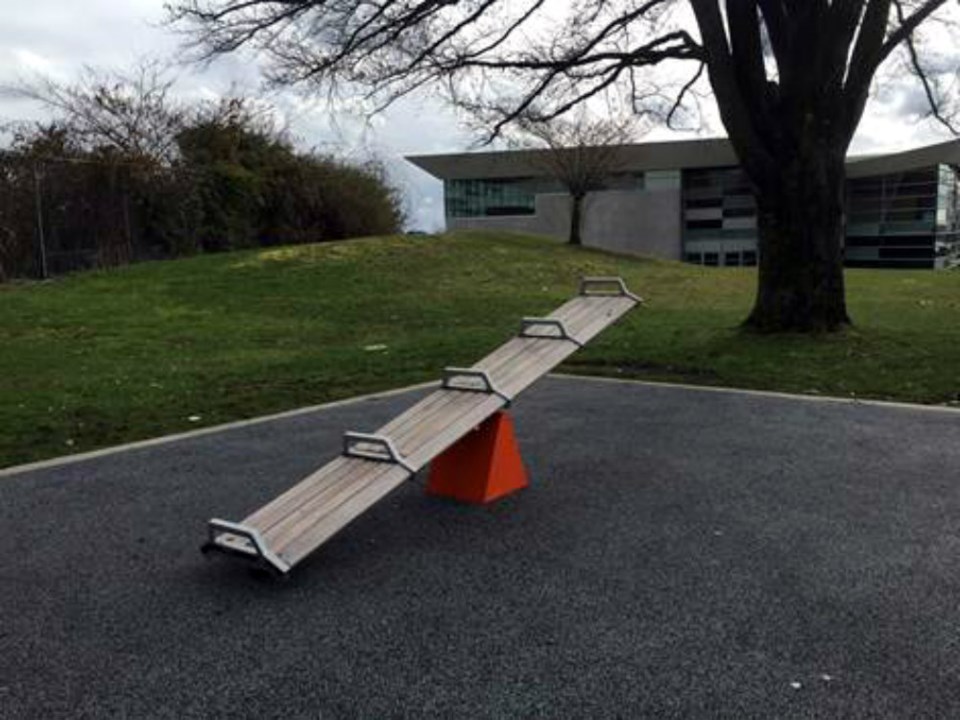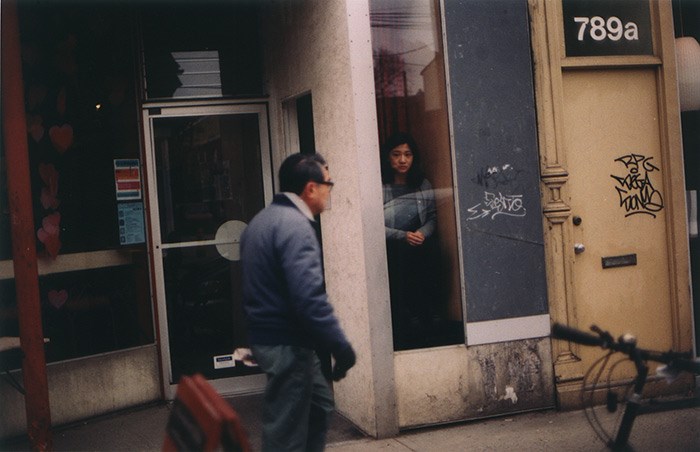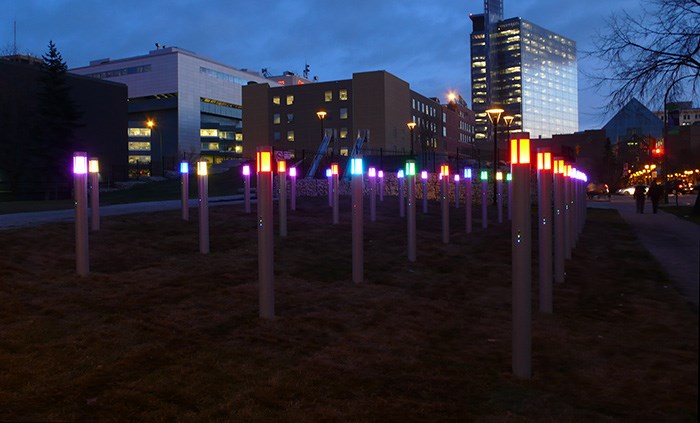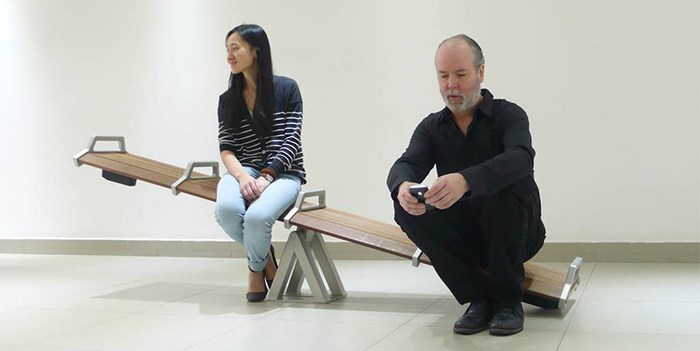How do you make space and time for something as simple and undervalued as play and human contact?
 Photo City of Vancouver
Photo City of Vancouver
Earlier this month, The City of Vancouver unveiled its latest piece of public art. Described as “part bus bench, part teeter-totter”, SeaSawSeat was created by the city’s current artist in residence Germaine Koh.
To learn more about the new piece, we reached out to Germaine to discuss the artwork, its meaning, the importance of civic conversations and more.
VIA: Can you tell us about the intention behind SeaSawSeat?
Germaine Koh: It is a pretty simple gesture – taking a commonplace object from the urban environment and modifying it so that its normal use is expanded into other possible uses – in this case, play and interaction with strangers. Some might criticize how simple a gesture it is, but I think the clarity of the gesture is part of what makes it work and makes its intentions clear.
 Watch by Germaine Koh.
Watch by Germaine Koh.
VIA: Do you think Vancouver is lacking these types of gestures?
GK: According to Vancouver Foundation research from 2012 and 2017, one of the feelings that people in this region experience most is social isolation – the feeling of not having substantial connections to other people. Even when we believe we are interacting with others, for example on our phones or social media, it’s a different quality of interaction that we have in person, and for sure having our interactions with the world mediated by our smart phones makes us less open to the accidents and uncertainties of, for example, talking to strangers.
"Having thought-provoking things in the public realm is part of what furthers our grand civic conversation."
VIA: What sparked your interest in the significance of everyday actions and interactions?
GK: Early in my career I realized that I was more interested in the systems that surrounded and created meaning around objects (I had trained as a painter), and from that point my art practice has been largely concerned with trying to pay attention to details and patterns of use in the world around us that end up shaping our lives, but which we might not always acknowledge. I think there’s a great wealth of collective wisdom and knowledge that are embedded in commonplace ways of doing things, and to look at these can tell us a lot about ourselves.
 DIY Field by Germaine Koh.
DIY Field by Germaine Koh.
VIA: Why do you think public art important in Vancouver?
GK: Having thought-provoking things in the public realm is part of what furthers our grand civic conversation. That might be a somewhat intangible principle for some people, but it does contribute to the quality of our urban life and our sense of ourselves as a collective. It’s one piece of a public conversation that might also include what your favourite ramen place is, how crowded the 95 bus is, whether you prefer Nooners or night games at the Nat, and where the next modular housing development should go. It’s part of how we talk through our collective values.
"It is actually a bit of a triumph that the simple charm of a teeter-totter persists."
VIA: There’s a small population that seems consistently opposed to public art in Vancouver. Do you ever wish you could address these critics? Do you have any response for people who might say, “this is just a teeter-totter?”
GK: Those who would say that it’s just a teeter-totter are actually closer to the real conundrum that the piece wants to raise, than the people who are focused on budget details. That conundrum is: how do you make space and time for something as simple and undervalued as play and human contact? And how do you do so while mitigating how risky that feels to some? Some people may not realize that seesaws have largely disappeared from public playgrounds, replaced by pieces of equipment that are perceived to be safer, so part of the engineering bill was working around that and finally agreeing to build the piece to CSA guidelines for playground equipment. So to me, it is actually a bit of a triumph that the simple charm of a teeter-totter persists.
 Photo: Germaine Koh
Photo: Germaine Koh
Germaine Koh will speak at The D.I.Y. City: Valuing the Unplanned at Richmond City Hall on May 10. For more info, visit the City of Richmond BC website HERE.


